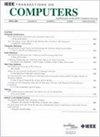无人机辅助微服务移动边缘计算架构:解决灾后紧急医疗救援问题
IF 3.8
2区 计算机科学
Q2 COMPUTER SCIENCE, HARDWARE & ARCHITECTURE
引用次数: 0
摘要
在灾后紧急医疗救援行动中,快速建立自适应灵活的边缘计算网络,平衡数据卸载与能耗,确保网络稳定运行已成为当务之急。为了解决这些挑战,我们提出了一种无人机(UAV)辅助微服务移动边缘计算(MEC)架构。该架构可快速部署,为灾区提供临时网络覆盖和电子商务服务。利用基于变压器的资源管理(TBRM)方法优化数据卸载效率,降低能耗,从而最大化体系结构的服务时间。为了提高体系结构的安全性和可靠性,设计了四个微服务来管理无人机的全生命周期,并通过双数字签名证书实现无人机身份认证。大规模仿真实验验证了该体系结构在复杂救援场景下的有效性,为灾后医学救援工作提供了强有力的技术支持。本文章由计算机程序翻译,如有差异,请以英文原文为准。
UAV-Assisted Microservice Mobile Edge Computing Architecture: Addressing Post-Disaster Emergency Medical Rescue
In post-disaster emergency medical rescue operations, rapidly establishing an adaptive and flexible edge computing (EC) network, balancing data offloading with energy consumption, and ensuring the stable operation of the network have become urgent priorities. To address these challenges, we proposed an unmanned aerial vehicle (UAV)-assisted microservice mobile edge computing (MEC) architecture. The architecture can be rapidly deployed to provide temporary network coverage and EC services in disaster-stricken areas. A transformer-based resource management (TBRM) approach is utilized to optimize data offloading efficiency and reduce energy consumption, thereby maximizing the service time of the architecture. To enhance the security and reliability of the architecture, four microservices are designed to manage the full UAV lifecycle, and UAV identity authentication is implemented through dual digital signature certificates. Large-scale simulation experiments have demonstrated the effectiveness of the architecture in complex rescue scenarios, providing strong technical support for post-disaster medical rescue efforts.
求助全文
通过发布文献求助,成功后即可免费获取论文全文。
去求助
来源期刊

IEEE Transactions on Computers
工程技术-工程:电子与电气
CiteScore
6.60
自引率
5.40%
发文量
199
审稿时长
6.0 months
期刊介绍:
The IEEE Transactions on Computers is a monthly publication with a wide distribution to researchers, developers, technical managers, and educators in the computer field. It publishes papers on research in areas of current interest to the readers. These areas include, but are not limited to, the following: a) computer organizations and architectures; b) operating systems, software systems, and communication protocols; c) real-time systems and embedded systems; d) digital devices, computer components, and interconnection networks; e) specification, design, prototyping, and testing methods and tools; f) performance, fault tolerance, reliability, security, and testability; g) case studies and experimental and theoretical evaluations; and h) new and important applications and trends.
 求助内容:
求助内容: 应助结果提醒方式:
应助结果提醒方式:


